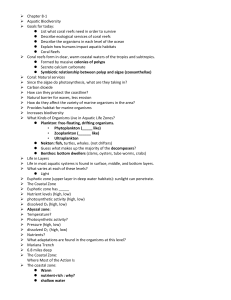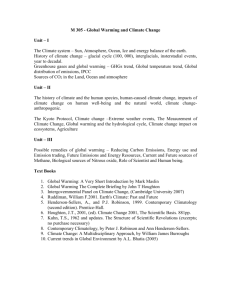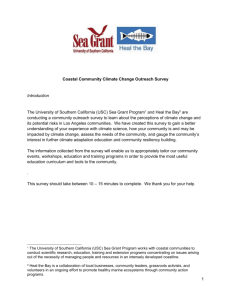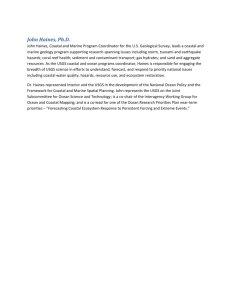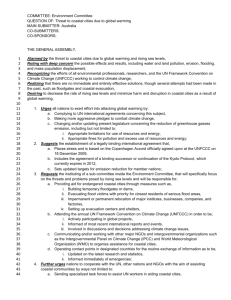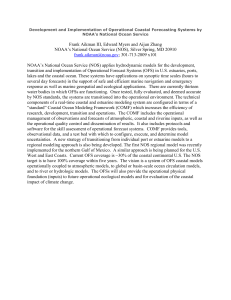My Summary of What to Do When the Ocean Rises
advertisement
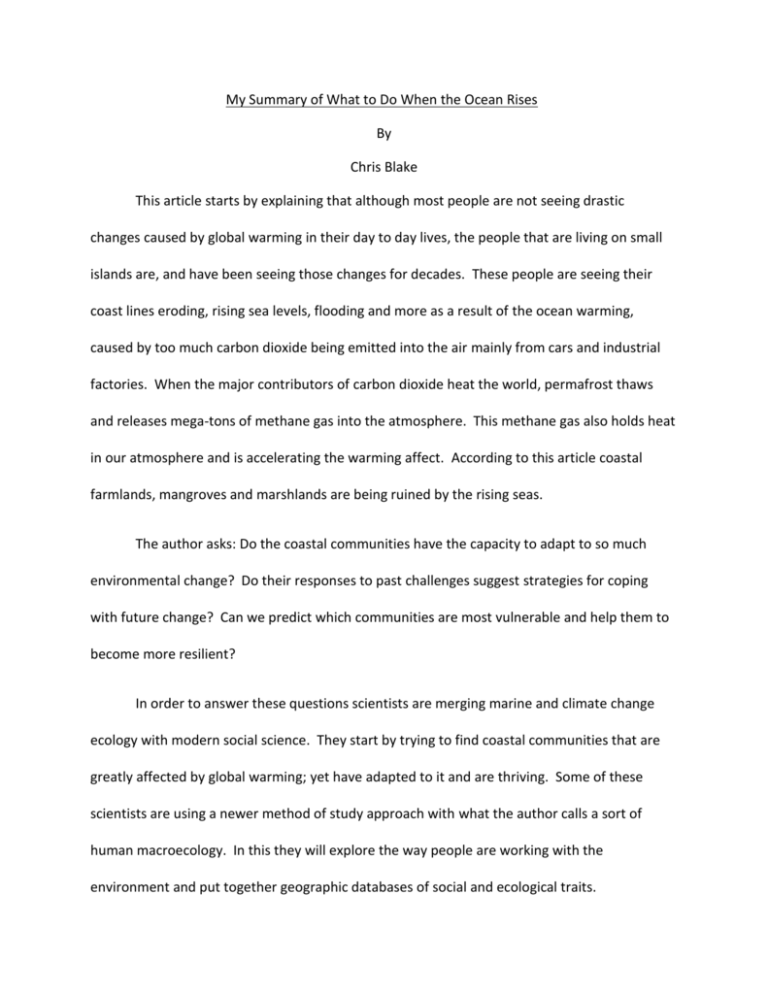
My Summary of What to Do When the Ocean Rises By Chris Blake This article starts by explaining that although most people are not seeing drastic changes caused by global warming in their day to day lives, the people that are living on small islands are, and have been seeing those changes for decades. These people are seeing their coast lines eroding, rising sea levels, flooding and more as a result of the ocean warming, caused by too much carbon dioxide being emitted into the air mainly from cars and industrial factories. When the major contributors of carbon dioxide heat the world, permafrost thaws and releases mega-tons of methane gas into the atmosphere. This methane gas also holds heat in our atmosphere and is accelerating the warming affect. According to this article coastal farmlands, mangroves and marshlands are being ruined by the rising seas. The author asks: Do the coastal communities have the capacity to adapt to so much environmental change? Do their responses to past challenges suggest strategies for coping with future change? Can we predict which communities are most vulnerable and help them to become more resilient? In order to answer these questions scientists are merging marine and climate change ecology with modern social science. They start by trying to find coastal communities that are greatly affected by global warming; yet have adapted to it and are thriving. Some of these scientists are using a newer method of study approach with what the author calls a sort of human macroecology. In this they will explore the way people are working with the environment and put together geographic databases of social and ecological traits. They use coastal east Africa as a case study to develop their model of estimating the “social adaptive capacity” of communities. They are finding that coral reefs protect a lot of the tropical areas and act as buffers to large waves and are a safe place for sea life to exist. These reefs don’t tend to exist in colder areas, and in the warmer areas they do exist in, the coral is dying off because of the warmer waters. The coral dying takes away the buffer, which takes away the safe habitat for sea life and creates a more open path for waves to pound the shoreline. So, the warming is affecting the animals in the ocean as well as the humans on the shore. Another problem happening is that most of these coastal societies are getting a lot of their food and tourism from fishing, snorkeling, scuba and other ocean healthy activities. So their economy is affected by the health of the coral and the warmth of the ocean. The way these coastal communities react and the outcome depend on the literacy rate, assets owned, social adaptive capacity and their degree of social organization. Scientists are trying to measure these things in this African community then compare to other coastal communities in order to find out which communities will do better and which will do worse as the oceans warm and rise. This author then talks about her home town, North Carolina, and says that they have the capacity to change, accommodating the rising ocean but they have been blocked from preparing for the rise by real estate lobbyists whom are afraid that if they prepare; costal values will go down. The best strategy for adapting to global warming is to hurry to slow it by using more environment friendly means of energy and less of the coal and oil that we mostly use now. In the African society that these studies talked about there is very little use of fossil fuels. Therefor slowing their uses of those is not going to create a large effect. Which is why planning for adaptation is the best answer for them it seems.
